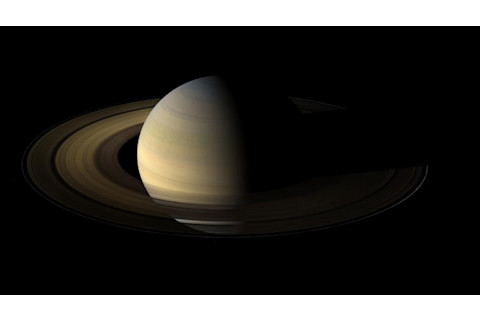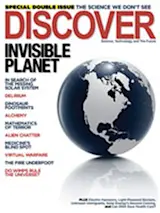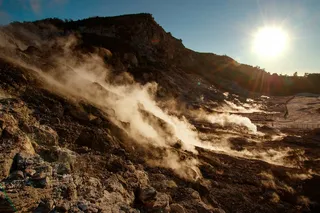Much like the ancient holiday of Saturnalia, when Roman masters swapped roles with servants, the recent buzz surrounding Saturn has mainly focused not on the giant planet but on its satellites. And with good reason: The largest of those moons, 3,200-mile-wide Titan, has an atmosphere that may be similar to that of our own planet in its younger days, and Enceladus, a 300-mile-wide ball, has a geologically active surface. Another Saturnian satellite, two-faced Iapetus, puzzles astronomers with one bright hemisphere and one that is as black as coal. But recent images from the Cassini spacecraft, whose mission has just been extended to 2017, are putting Saturn itself back in the spotlight, giving us new information about the planet’s powerful weather patterns and the structure of its glorious rings. The major rings are designated A, B, and C (running inward from the outermost ring).

NASA/JPL/Space Science Institute | NULL
MIND THE GAPSMoons cause most of the gaps between Saturn’s rings. Like a boulder in a riverbed, a moon’s gravitational pull creates a wake in the surrounding flow of ring material. In 2006 Cassini discovered football-field-size wakes caused by previously undetected moonlets orbiting within the A ring. This image is from Saturn’s late 2009 equinox, when the rings were tilted edge-on to the sun, giving them an unusually dark appearance.
STORMY WEATHERClouds of ammonia and ice in Saturn’s atmosphere produce huge electrical storms that rage for weeks or months. Early in its mission, Cassini started to detect lightning on Saturn using its radio instruments, but recently the probe released the first-ever movie of lightning on another planet, showing a 190-mile-long flash from a 10-month storm in 2009.
YOUTHFUL COMPANIONSSaturn’s rings consist of water-ice particles—typically ranging in size from a few inches to many feet—that continually gather into clumps and drift apart again. The particles’ incredible brightness makes some astronomers suspect that the rings are much younger than the planet: If they were old, they would have been darkened by accumulated carbon from meteoroid impacts. In 2017 the Cassini probe will plunge between the planet and its innermost ring, which should reveal much about the rings’ age and composition.
INVISIBLE RINGThe Cassini Division—a dark swath between Saturn’s broad A and B rings—looks empty, but it is actually a separate ring, just one with fewer particles. NASA’s Voyager discovered this hidden material, and the Cassini probe shows previously unseen ringlets and gaps within it. The cause of some of those gaps is not evident; in January, a group of astronomers proposed that they result from the gravitational pull of particles in the giant, nearby B ring.














